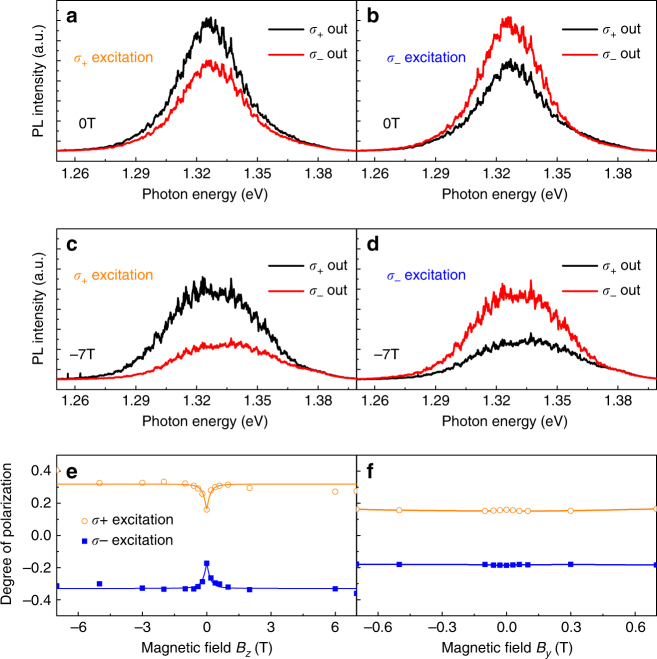Fig. 2.
Valley polarization with CW laser excitation. a, b Valley polarization at 0 T. Right and left circularly polarized light are labeled as σ+ and σ−. Under σ+ laser excitation, σ+ PL output component is more than σ− and vice versa for σ− excitation. This shows evidence of valley polarization. c, d Valley polarization at −7 T. Valley polarization is enhanced by applying magnetic field perpendicular to the sample surface. e The valley polarization degree as a function of applied magnetic field in the z direction. The solid line is the fitting result following equation , where j indicates the excitation polarization, is the residual degree of polarization at 0 T due to the valley polarization, is the saturation level of degree of polarization, and α represents the intervalley scattering between the dark exciton. f, The valley polarization degree as a function of applied magnetic field in the y direction with Bz = 0T

